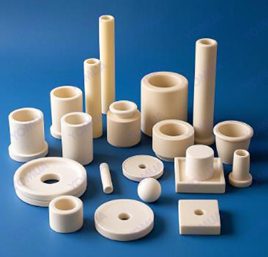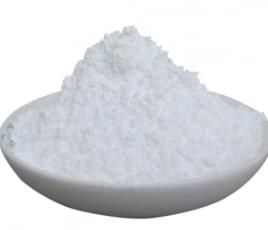Choosing the right additives to optimize the performance of alumina ceramics involves considering several factors, including the desired properties, processing conditions, and application requirements. Below are key steps and considerations:

1. Define the Target Properties
- Identify the specific properties you want to enhance, such as:
- Mechanical properties (e.g., hardness, strength, fracture toughness).
- Thermal properties (e.g., thermal conductivity, thermal expansion coefficient).
- Electrical properties (e.g., dielectric constant, insulation performance).
- Optical properties (e.g., transparency, reflectivity).
2. Understand the Role of Additives
- Sintering Aids: Additives like MgO, SiO2, or Y2O3 can lower sintering temperatures and improve densification.
- Grain Growth Inhibitors: Additives such as MgO or ZrO2 can control grain size, enhancing mechanical strength and toughness.
- Property Modifiers: Additives like TiO2 or Cr2O3 can alter thermal or electrical properties.
3. Consider Compatibility
- Ensure the additive is chemically compatible with alumina and does not introduce undesirable phases or impurities.
- Evaluate the additive’s impact on the sintering process and final microstructure.
4. Optimize Additive Concentration
- Determine the optimal concentration of the additive to achieve the desired effect without compromising other properties.
- Conduct experiments to test different concentrations and their effects on performance.
5. Evaluate Processing Conditions
- Consider how the additive affects processing parameters such as sintering temperature, time, and atmosphere.
- Ensure the additive does not complicate the manufacturing process or increase costs significantly.
6. Test and Validate
- Perform laboratory tests to validate the additive’s effectiveness in improving the target properties.
- Analyze the microstructure and properties of the final product using techniques like SEM, XRD, or mechanical testing.
7. Consider Cost and Availability
- Choose additives that are cost-effective and readily available to ensure scalability for industrial production.

Summary Table:
Key Considerations for Selecting Additives
| Factor | Description | Examples/Notes |
|---|---|---|
| Target Properties | Identify the specific properties to enhance (e.g., mechanical, thermal, electrical). | Mechanical: Hardness, strength, toughness. Thermal: Conductivity, expansion. |
| Role of Additives | Understand how additives influence properties and processing. | MgO: Grain growth inhibitor. Y2O3: Toughness enhancer. SiO2: Sintering aid. |
| Compatibility | Ensure chemical compatibility with alumina and avoid undesirable phases. | Avoid additives that form low-melting phases or impurities. |
| Additive Concentration | Optimize the amount of additive to balance performance and cost. | Test concentrations (e.g., 0.1–5 wt%) to find the optimal level. |
| Processing Conditions | Evaluate how additives affect sintering temperature, time, and atmosphere. | Some additives may require specific sintering atmospheres (e.g., reducing, inert). |
| Testing & Validation | Perform experiments to validate the additive’s effectiveness. | Use SEM, XRD, mechanical testing to analyze results. |
| Cost & Availability | Choose cost-effective and readily available additives for scalability. | Prioritize additives with low cost and high availability. |
Conclusion
Example Additives and Their Effects:
| Additive | Effect on Alumina Ceramics |
|---|---|
| MgO | Inhibits grain growth, improves densification, and enhances mechanical strength. |
| SiO2 | Lowers sintering temperature and improves densification. |
| Y2O3 | Enhances fracture toughness and thermal shock resistance. |
| ZrO2 | Improves toughness through phase transformation toughening. |
| TiO2 | Modifies electrical properties and can improve sintering behavior. |
Selecting the right additives to optimize the performance of alumina ceramics is a critical process that requires careful consideration of the target properties, additive functionality, compatibility, concentration, and processing conditions. By systematically evaluating these factors and conducting thorough testing, it is possible to enhance the mechanical, thermal, electrical, or optical properties of alumina ceramics to meet specific application requirements. Additionally, balancing cost and availability ensures that the chosen additives are practical for industrial-scale production. With the right approach, additives can significantly improve the performance and versatility of alumina ceramics, making them suitable for a wide range of advanced applications.